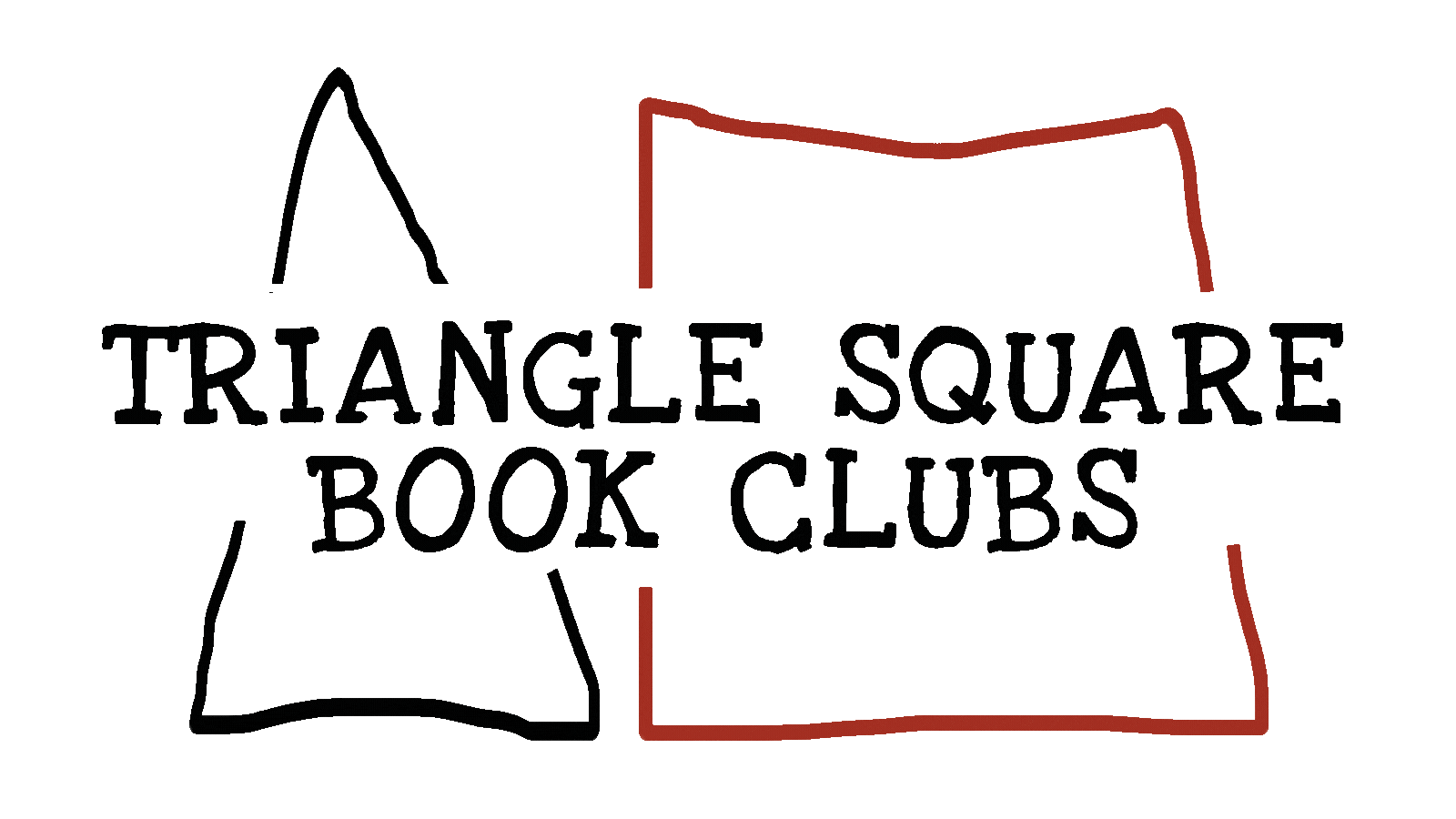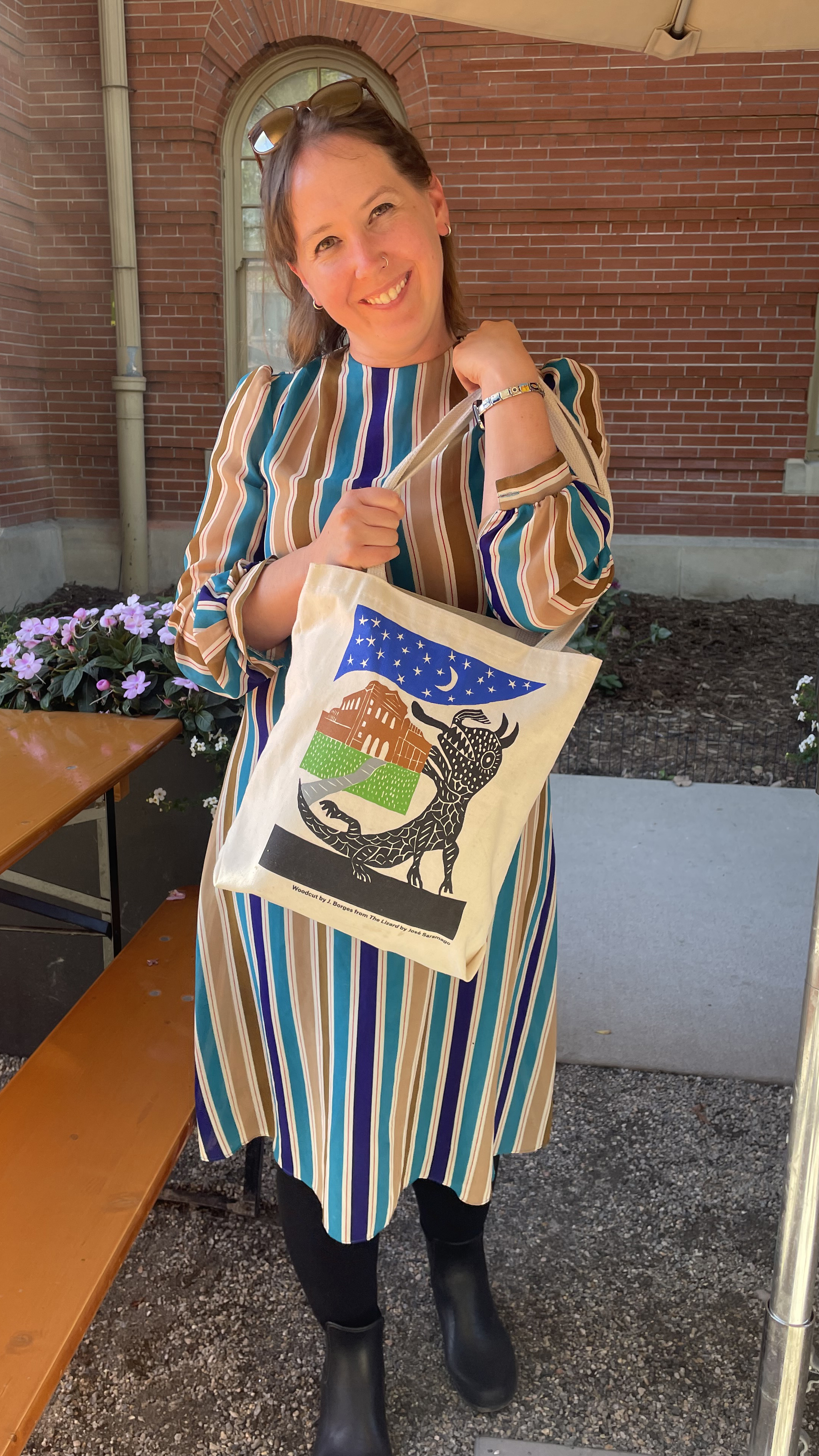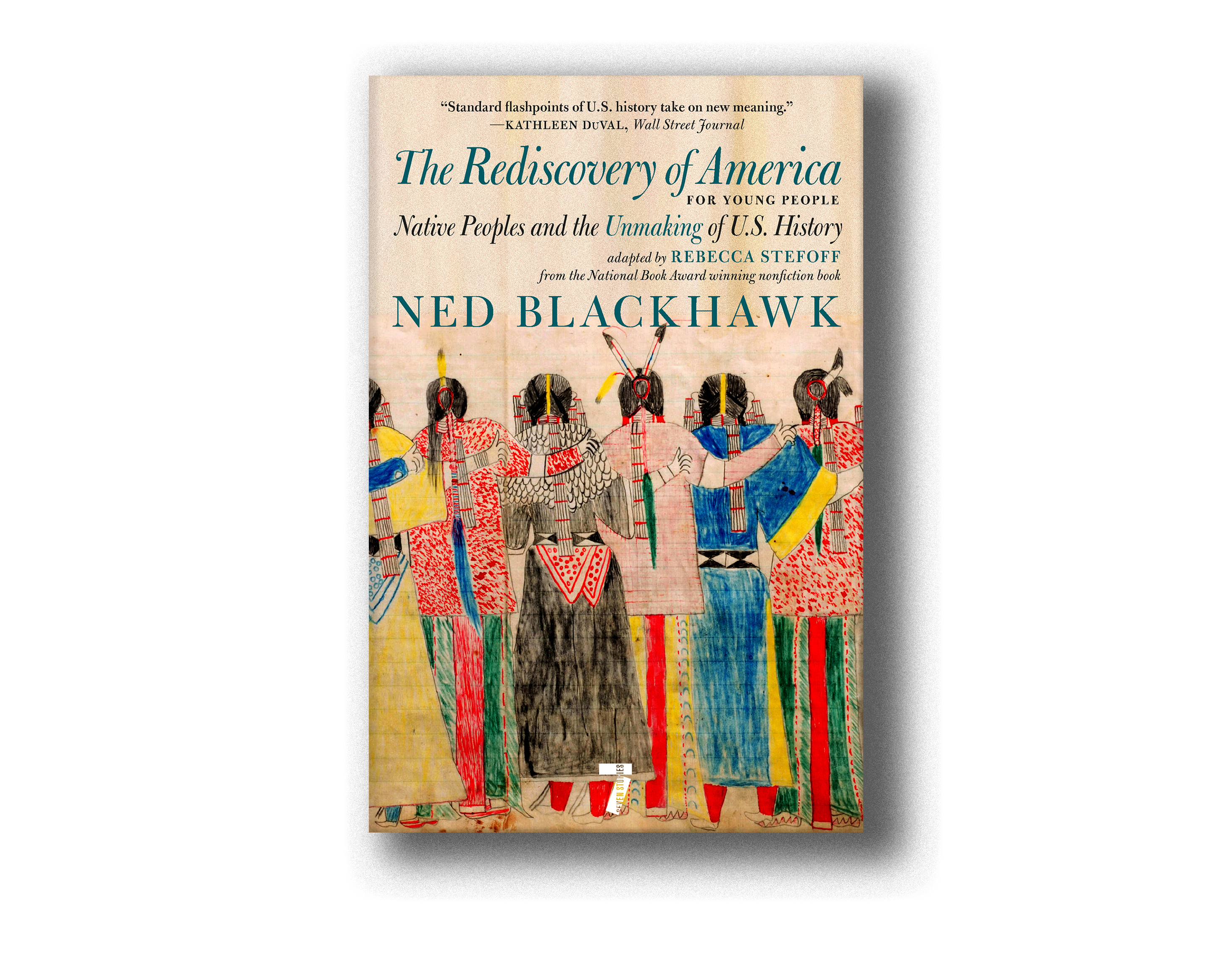While reading through Kurt Vonnegut’s papers in the Lilly Library, at Indiana University, as they worked on the first comprehensive edition of his short fiction, Vonnegut’s friend Dan Wakefield and Jerome Klinkowitz, a scholar of Vonnegut’s work, came across five previously unpublished stories.
In anticipation of publishing Kurt Vonnegut’s Complete Stories (available for order today!), we’ve been rolling out some of those tales that never found their way into print. The Atlantic got “The Drone King,” which they published along with an incredible animated version of the story. Another, “Requiem for Zeitgeist,” has been published on the website of The Nation.
And here’s "And on Your Left," a never before published Vonnegut story exclusively for the Seven Stories blog. It tells the tale of hard scientists forced into a life of show biz, and how they conspire to get back to their true calling. We hope you enjoy!
And on Your Left
The new research laboratory of the Federal Apparatus Corporation was called a “temple of science” by three out of six chief speakers at the dedication ceremonies—by a cabinet member, a state governor, and a Nobel Prize winner. They said that no American should miss seeing it, that it was the finest laboratory on earth. Company spokesmen responded by saying that every day was open house to everybody, regardless of race, color, or creed, and that buses would provide free transportation from downtown every hour on the hour, and that guides would be on duty. When the state Chamber of Commerce issued its annual vacation guide, it gave more space to the laboratory as a tourist attraction than it did to the fifth highest waterfall in the East or to the picnic grounds where the family of Hendrik van Zyl had been massacred by drunk Natacoochie braves.
Inside the new temple of science, which was fieldstone and steel and glass, and whose windows looked out over woods and blue Lake Minango, Dr. Harold Meyers sat in his laboratory, coaxing a shaved rat from one cage to another, which the rat would share with a black vacuum tube the size and shape of a fat cigar.
Meyers, whose taste in haircuts and clothes was that of a college boy, though he was forty-five, made chirping sounds intended to be soothing and rat-like, and he prodded the behind of the naked and furious animal with the rounded end of his fountain pen.
“There now—eep, eep—easy, boy—tchk, tchk—attaboy.” The rat was halfway into the new cage. “An inch more, baby, and—”
“And on your left,” howled a guide, “is Dr. Harold Meyers, the man I’m sure you’ve all read about in the papers!”
Meyers dropped his pen, and the rat attacked it, tearing open the barrel and ink reservoir, spattering the tabletop and Meyers’s white cuffs.
“Dr. Meyers,” said the guide proudly, “is none other than the man who recently discovered the Z-rays you’ve all been reading about. At this very moment, you may be seeing history made, for Dr. Meyers is now at work on possible applications of Z-rays to everyday life.”
Dr. Meyers smiled bleakly as the guide stepped into the laboratory, and forty Boy Scouts crowded into the room to peer under bell jars, open drawers, test faucets, and try to force jelly beans and peanuts through the wire mesh of the animal cages.
“Just take a minute of your time, Doctor,” said the guide expansively. “This,” he said, gesturing at the laboratory, “is where the miracles of the modern age come from—from modern research. Men like Dr. Meyers are the American pioneers of the present, working for a greater tomorrow.”
Dr. Meyers looked down at his feet with what he hoped was becoming modesty. Since moving from the old laboratory to the new, he had heard the same speech at least four times a day.
“Would you mind showing these fine young Americans a little something about Z-rays, Doctor?”
“No, not at all,” sighed Meyers. “Glad to.” He could do it in his sleep. He hadn’t done much of anything else for six months. “Through the hoop, Rover,” he said to himself, and he stood and closed the Venetian blinds.
“Z-rays,” he said in a singsong voice, without reflection, “are interesting radiations which make human skin, and all bare animal skin, for that matter, fluoresce—that is, they make skin glow in the dark. This small tube here radiates Z-rays. I’ll turn it on, and I want you to watch its effect on my face.”
As Meyers talked and did his tricks, his thoughts were free to go wherever they liked, so automatic was his performance by now, and his thoughts did not care to remain in the laboratory with the guide and the Boy Scouts. They fled the world of tile and stainless steel and floor-to-ceiling windows, and returned to the antique warehouse downtown that had been partitioned and heated to house the first research scientists hired by the company in the late twenties—when the hiring of pure research scientists by industry had been something of an experiment in itself. Guides would have sooner conducted visitors on tours of the company’s men’s rooms than take them to the research laboratory in those days—the days before the temple.
The Boy Scouts laughed delightedly, and Meyers realized that he was approaching the finale of his act, and was playing Z-rays on the shaved laboratory animals in their cages along one wall. He chuckled through his apathy, as though having the time of his life, and suddenly played the rays over the Boy Scouts, who guffawed and nudged each other as they glowed in the dark.
Dr. Meyers turned off the tube, opened the Venetian blinds again, and sat down, smiling glassily at his guests, waiting for them to get out so he could get back to work.
“Thank you, Doctor,” said the guide graciously.
“You’re certainly welcome.” He drummed on the desk as the guide made no move to leave.
“I suppose you boys are wondering what all these valves are for, eh?” said the guide, pointing to a battery of taps over a sink. “Well, a research scientist needs a lot more on tap than you and I do at home. He’s got hot and cold water, sure, but, in addition, every scientist in this building has right at his fingertips nitrogen, hydrogen, oxygen, steam, vacuum, and . . .” The guide paused tantalizingly. “And who wants to guess what comes out of this one?”
Dr. Meyers clenched and unclenched his hands several times as the Boy Scouts fidgeted and offered no guesses, and the guide coyly refused to tell them. The guide at last gave up, and said, with an air of great wisdom, “Illuminating gas!”
Dr. Meyers exhaled with relief, and raised his eyebrows in an expression of cheery farewell.
The guide held fast. “Absolutely everything a research scientist could possibly need was put into this building,” he said. “The company’s first laboratory was in a makeshift building, and the scientists had to make it do as well as they could. But this building was built from the ground up for research.” He turned to a Scout next to him. “Say you were Dr. Meyers, here, sitting at the desk, and all of a sudden a terrible fire broke out in the apparatus between you and the door. Remember, you’re four stories up. What would you do?”
“Die?” said the Scout, looking at Meyers with awe.
“Here’s what you’d do,” said the guide happily, and he skirted Dr. Meyers and gave the wall behind him a savage kick. An escape panel in the wall snapped free from its latch, and swung open into the next laboratory. There was an outcry from the room next door, followed by the din of splintering glass.
“Goddammit, Meyers!” shouted Dr. Herpers, Meyers’s neighbor, thrusting his head through the opening in the wall. “What are you doing—switching from Z-rays to battering rams?” He saw the guide. “Oh—it’s you!”
“I was simply showing these boys the wonders of the laboratory,” said the guide coolly.
“Knocking out partitions is your idea of simplicity?” said Herpers bitterly.
“Please,” said the guide, “these young gentlemen are guests of the company.” He started to shepherd them into the hall. “Thank you, Dr. Meyers. That was very interesting. Now, boys, on your right you’re about to see something you can tell your grandchildren about. Could we have a minute of your time, Dr. Dawson?”
Meyers strode over to the door and slammed it.
Herpers had crawled through the escape hatch, and was looking gloomily out the window at Lake Minango. “There’s one thing they forgot to pipe into every laboratory,” he said at last.
“Helium?” said Meyers.
“Gin,” said Herpers. “Nice view you have here. Must inspire you.”
“Give me the Universal Clothing outlet and the Lehigh Valley switchyards any day,” said Meyers. This was the view he’d had through a crusty window in the old laboratory. “You can get used to freight whistles, and the locomotives never came right into the laboratory. What are you working on now?”
“Working up a new act I think they’ll like,” said Herpers. “See—I come on with a buck and wing, balancing a ringstand on the end of my nose and playing the 1812 Overture on a panpipe made out of test tubes. I was going to work in my vacuum pump, but the guide just broke it with the escape panel.”
“It’s just as well. Dr. Levi’s got his whole act built around a vacuum pump, and the tours start there.”
The door opened, and Dr. Elizabeth Dawson, a young woman physicist from across the hall, her hands clasped, her face grave and white, came in.
“Liz!” said Meyers, “what on earth happened?”
“For five days,” she said hollowly, “I have been trying to get out a quarterly report that should have taken me four hours to write.”
“In the bad old days,” said Meyers.
“All I had to do today was add up a simple column of figures. You know—two plus two and things like that?” She hammered on the stainless steel, sinktop with her small fist. “Well, twenty times I’ve added the column, and twenty times I’ve been interrupted—to be oggled at and talked about and photographed like a Navaho rug weaver or something. And, just now, just after Troop 17 marched out, Dr. Berry called to ask me if I knew the report was overdue, and would I please try to be more business-like?” She burst into tears. “I wish to heaven I’d never started work on the infrared microscope!”
“It’s good vaudeville, all right,” said Herpers gloomily.
“This has got to stop!” said Meyers, patting Dr. Dawson’s shoulder. “Nobody’s getting anything done.”
“And on your left,” cried a guide, “is Dr. Harold Meyers, the man you’ve no doubt all read about in the papers.”
“Places, everybody,” said Herpers, “curtain going up.” He crawled back into his own laboratory.
“We’re doing our act just once more, Liz,” whispered Dr. Meyers to Dr. Dawson, “and then we’re going to Dr. Berry and tell him the hell with it. Buck up.”
“Just take a minute of your time, Dr. Meyers,” said the guide.
“No trouble,” said Dr. Meyers hoarsely.
<<<
Dr. Berry, head of the laboratory, stared glumly out at Lake Minango, his back to his white, kidney-shaped desk, and to the three tense scientists standing before it. Drs. Harold Meyers, Elizabeth Dawson, and Edward Herpers. “You’ve got to look at it from the viewpoint of the men in the line,” he said, “because they’re the ones who have their hands on the purse strings.”
“The who?” said Meyers. Dr. Berry, whose position brought him into contact with company officers in production and sales and advertising and distribution, was full of jargon that meant nothing to the scientists under him.
“The men in the line,” said Dr. Berry, “the people who make the money that built this place, the money that pays our salaries.” He sighed. “Facts of life.”
“We earn the money,” said Dr. Meyers. “Or used to, and would again, if we had half a chance.”
Dr. Berry turned around to face them. “They intend to see that we do,” he said. “This place was supposed to cost seven million, and it’s run over nine already. Did you see the manager of sales out here at the dedication?”
“Eugene Bullard?” said Herpers. “He was the one who went around saying, ‘How much this cost, how much this cost?’”
“And rubbing the drapes between his thumb and forefinger,” said Meyers.
“And asking which room was Marie Antoinette’s bedroom,” said Liz Dawson.
“That’s Bullard,” said Dr. Berry heavily. “And, as long as he keeps selling the way he’s been selling, to all practical purposes this is his company.”
“What’s Bullard to us?” said Meyers. “We never had anything to do with him before.”
“We never made a raid on the company treasury like this before,” said Berry, “and Bullard has a profound interest in where the dollars go—and, God help us, he has the company president’s ear. We wouldn’t have this laboratory at all, if I hadn’t been able to sell Bullard on its being a terrific investment in sales promotion. And you heard what he said at the dedication.”
Dr. Meyers quoted from dismal memory: “‘The basic job of every man and every dollar in this company is to sell, sell, sell!’”
“So,” said Dr. Berry, “in exchange for our new facilities we have the new responsibility, according to Mr. Bullard, of being host to potential consumers of the company’s products, and making sure that they leave with opened billfolds and stars in their eyes.”
“But nobody’s getting any research done!” said Dr. Meyers hotly. “Why don’t you tell Bullard to keep his big nose out of what he doesn’t know anything about?”
Dr. Berry turned white, and was about to say something bitter when the telephone rang. “Dr. Berry speaking. Oh—hello, sir. What’s that? Oh, yes, I picked the color for the foyer walls—light blue. Seemed like a nice, cool, restful color. Uh-huh. I see. Well, perhaps we should strive for more of a feeling of excitement and adventure as the visitors come in.” He chuckled without changing his grave expression. “Well, I’m not used to looking at things from the angle of sales psychology, but I’m learning. All right, sir—a warm yellow on the orange side.” He glanced at his watch. “You and your party are coming out in an hour, you say? Well, sir, we can hardly have the foyer redecorated by then, but everything else will be ready. Thanks for calling, Mr. Bullard.”
Dr. Berry hung up and tried to remember what he had been about to say to Dr. Meyers. “Oh—in reply to your question, Meyers: I don’t tell Bullard to mind his own business for the same reason that you don’t brush your teeth in hydrofluoric acid or mix ground glass with your breakfast cereal. My advice to you, to all three of you, is to count your blessings, keep your patience, and do the best you can. Bullard will be out here in an hour, incidentally, with some very important customers. White coats will be worn.”
<<<
Drs. Meyers, Herpers, and Dawson sat around Dr. Meyers’s desk in stiff, brilliantly- white laboratory coats, talking and drinking coffee warmed on a Bunsen burner, while waiting for Eugene Bullard and his important customers to arrive.
“Well, if Berry won’t stand up to Bullard, maybe we should. When he shows up, we can say we haven’t got anything to show, because we’ve been doing nothing but greeting visitors since we’ve been out here,” said Herpers, absently opening and shutting the valves that ran along the top of the sink like organ stops.
“Or put on such a dull, pointless show that Bullard would never want anybody to come out here again,” said Dr. Liz Dawson.
“And have the research appropriation cut to nothing,” said Meyers. He shook his head. “Poor Berry—I’ll bet he wishes to God he were out of administration and back in research. Let that be an example to all of us. Budgets, power politics, policy. He’s just got to play along.”
“Or quit,” said Herpers.
“Then somebody else would have to give up research and take his job, and it’d be the same damn thing all over again,” said Meyers. “Berry can cooperate or get out, and that goes for all of us.”
“No biz like showbiz,” said Herpers.
Meyers looked at him thoughtfully. “But maybe we could be too cooperative.”
“What do you mean?” said Liz Dawson.
Meyers rattled a pencil between his teeth. “Put on a real show, jam-packed with enthusiasm and sell, sell, sell, that’ll make Bullard and the tours look so foolish that we’ll have the place to ourselves forever after.”
“Or get fired,” said Liz Dawson.
“And on your left,” bawled a guide, “is Dr. Harold Meyers, the man I’m sure you’ve all read about in the papers.”
Dr. Meyers rolled his eyes. “So what’s the matter with getting fired?”
<<<
Eugene Bullard could drive a golf ball farther, hold his liquor better, and laugh louder than anyone else in the Federal Apparatus Corporation—feats that called for physical bulk carried proudly. His voice and heavy footfalls dominated the radiant-heated halls of the research laboratory, as a guide, subdued and polite in the presence of great rank, conducted him and a half-dozen important customers with millions to spend on a tour of the temple of science.
Dr. Meyers heard the party coming, tapped on the wall that separated his laboratory from that of Dr. Herpers, and telephoned Liz Dawson across the hall to whisper that the show was about to begin. He hung up.
“On your left,” said the guide, “is Dr. Harold Meyers, the man you’ve no doubt all read about in the papers.” He peered into the darkened laboratory with puzzlement, and cleared his throat. The only illumination in the room came from a spark gap in one corner. A blue-white spark formed at the bottom of a metal “V,” climbed sizzling to its top, and broke with a loud snap and began at the bottom again. In this unearthly light, Dr. Meyers sat at his desk with his chin on his folded arms, staring moodily at a vast and intricate system of flasks, condensers, beakers, burettes, retorts, fractionating columns, and glass tubing, which burbled and gasped ominously, and was filled with brilliantly colored fluids.
Eugene Bullard’s great voice was silenced by the scene, and the customers’ eyes, as they entered the laboratory on tiptoe, were filled with awe and reverence.
“Working on some new project, are you, Dr. Meyers,” said the guide uncertainly.
Dr. Meyers did not reply, did not seem to notice his visitors. Instead, he picked up a beaker that had been filling with a green solution dripping from one end of the glass jungle, and poured it down the sink, shaking his head ruefully. He opened a notebook and, with his callers looking on sympathetically, he crossed out something, and closed the book with a snap. “Five hundred and twenty-eight times I’ve tried,” he said aloud, in soliloquoy, “and five hundred and twenty-eight times I’ve failed.”
Dr. Herpers’s head appeared in the opening of the escape panel. “Harold, my boy, vot iss de madder?” he said, in thick Milwaukee English.
Dr. Meyers groaned. “It’s no use, Dr. Herpers. Solution 528 failed, just as all the others before it. It’s no use. The theory is correct—it’s got to be correct! But again I’ve failed. I give up.”
“No, no, my poy,” said Herpers, crawling into the laboratory and putting his arm around Meyers’s shoulder. “Dot’s not like you. Qvit? Not Meyers!”
“The hours, the years of failures, trying to make Federal Apparatus’s paint even better than it is.”
“As I told you von you came to us, a mere poy,” said Herpers, “you picked a hard assignment, making de company’s produgts even bedder zen dey are. Dey are already de greadest on eardt.”
Dr. Meyers looked at the ceiling. “It can be done—it’s got to be done. That’s the job of research: better products for more people at less cost.” He ran his hands through his hair. “But I have failed.”
Liz Dawson came into the room, brushing heedlessly past the rapt audience. “Harold,” she said softly, “what makes you so white?”
“Solution fife hundredt and tvenny-eight failed, Liebehen,” said Herpers.
“Oh, you poor man,” said Liz. “Your life’s work.”
Dr. Herpers took a step backward to let Liz get to Meyers, and knocked a bottle of amber fluid into the sink. “Ach! Vot a clumsy fool!”
“What difference does it make?” asked Meyers tragically, and he brushed a beaker filled with red fluid into the sink, where it splintered. He covered his eyes.
“Wait!” said Liz. “Look!” The mixture in the sink was fizzing, giving off bluish smoke.
“Mein Gott ! Vot iss?” said Herpers.
Exaltedly, the three crowded one another for a glimpse of the miracle in the sink.
“That’s it!” cried Meyers. “We’ve found it!"
“De qvest is over!” said Herpers.
“What will we call it?” said Liz.
“Five hundred and twenty-nine,” said Dr. Meyers in a faraway voice. “Solution 529!”
The three embraced one another, and headed for the door arm in arm. “We must tell Dr. Berry!” said Meyers, and the audience parted for them, flushed and speechless.
“Anodder first for de gumpany!” said Herpers.
<<<
In the hallway, Drs. Meyers, Herpers, and Dawson hurried toward a soundproofed conference room, where they could release the triumphant laughter quaking in their chests.
“Bullard was almost purple with embarrassment!” whispered Liz Dawson.
“And he can’t say we didn’t sell, sell, sell,” said Herpers.
“And that’s that for the tours!” said Meyers joyfully.
“Wait!” boomed Eugene Bullard, and he and his entourage came trotting after them. “By God,” he said, catching Meyers’s hand and crushing it affectionately. “Congratulations! I knew our research was pretty good, but it took you to show me it was great!”
The co-discoverers of solution 529 looked down at the floor and held their peace with modesty bordering on complete paralysis.
“I feel like a godfather to solution 529,” said a customer breathlessly.
“We all do,” said Bullard. “What we just saw was more thrilling, more inspiring than the Grand Canyon! Frankly, a lot of this outfit looks like it’s piddling away the time. But you, by golly—you’re doing work with some real guts to it. And if I have anything to say about it, nobody’s going to come to this laboratory without seeing what we just saw—eggs-ackly the way we saw it!”





